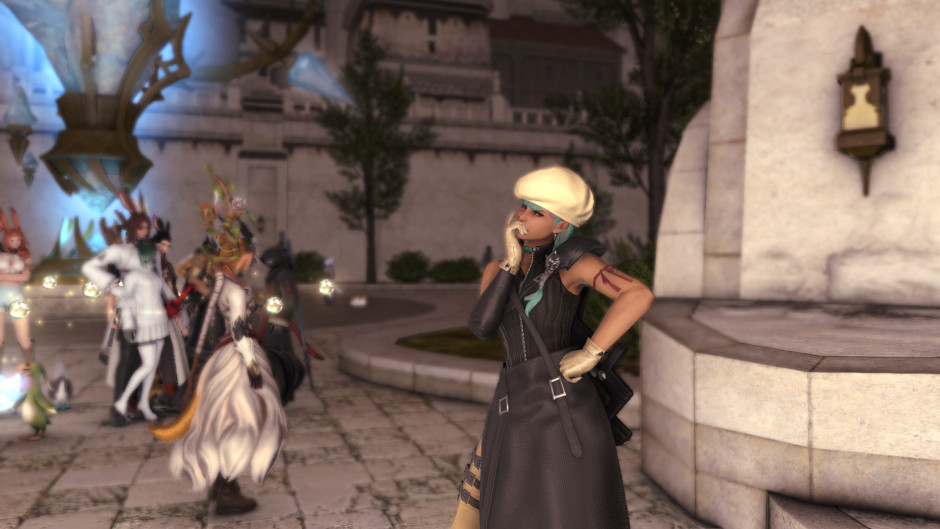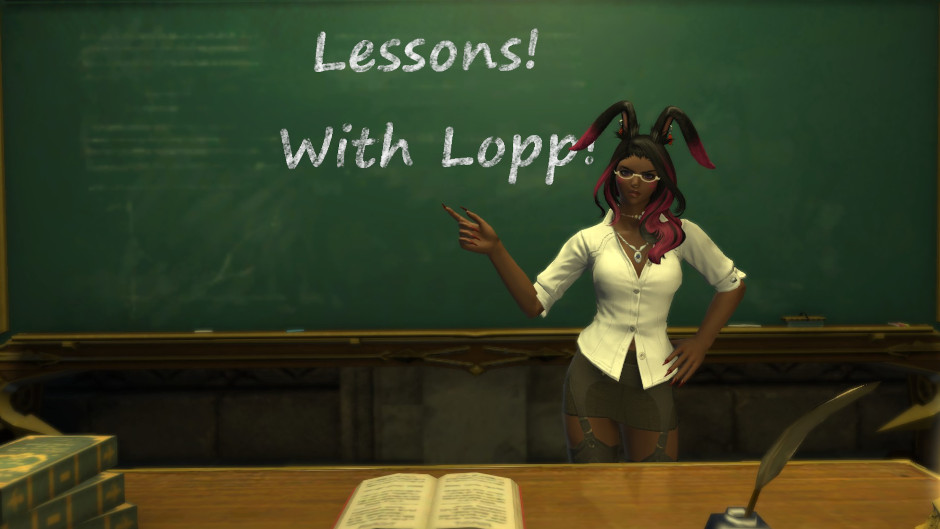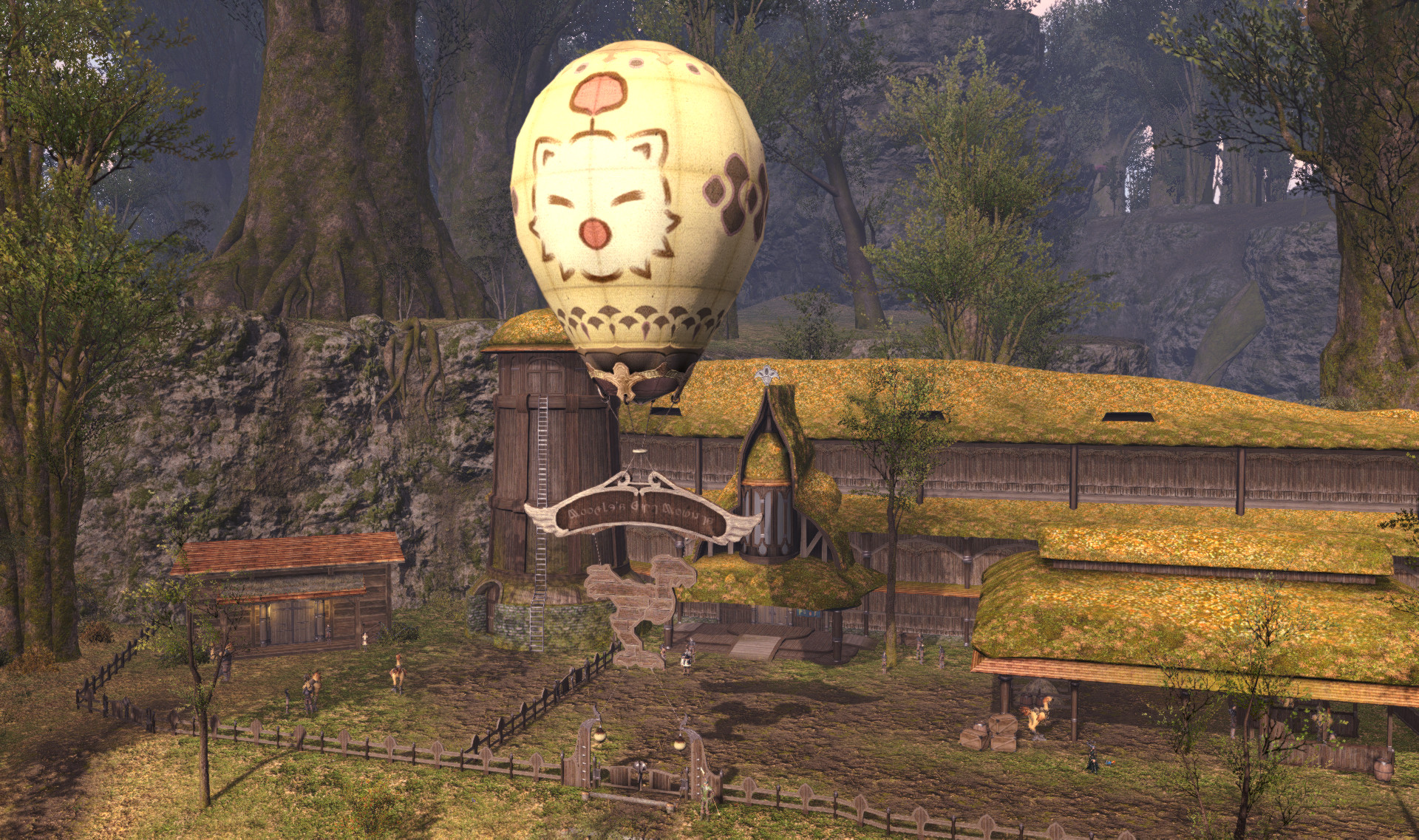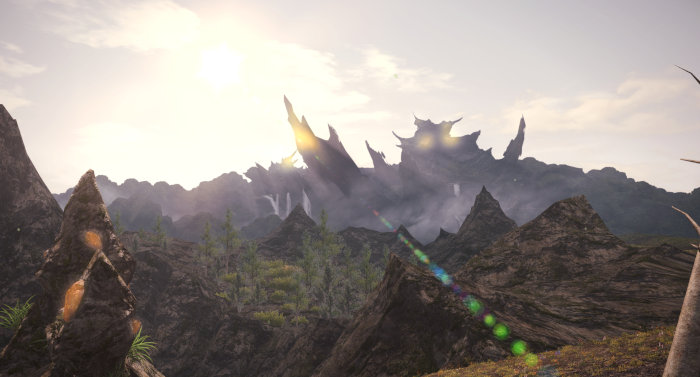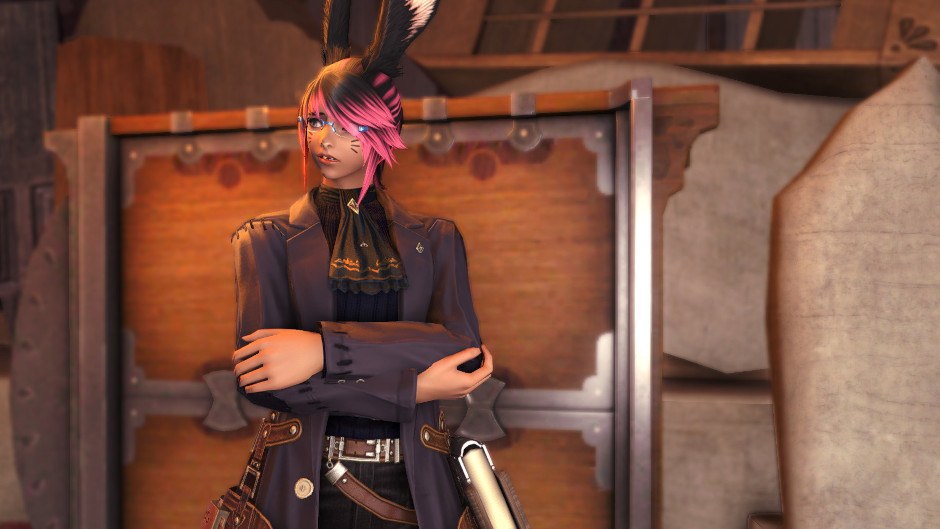Dew drops gather on leaves. As the sun peeks out through the many branches of Treespeak, several shop owners prepare for their day at Fallgourd Float carrying sacks and barrels from the small dock to the south of the town. This stock is precious, having come from various other settlements amongst the Black Shroud and brought at great risk up the river to the north.
While it is possible to take a path by land, which is a far safer journey aside from the occasional monster attack, the speed of travel is far too slow to keep pace with the demand for goods from travelers and adventurers passing through the Float. However, because of this, boat captains are exposed to the risk of the Ixal that gather to the south. At least, that is what the Twin Adders would have us believe.
It is true that members of this reptilian species hold no love in their hearts for the safron-garbed Grand Company soldiers, though they rarely - if ever - take hostile action towards the various rafts and gondolas that make the daily journey from the Central Shroud. This is not to say they are unaware of these shepherds of trade. In fact, several claim to have seen the glint of spy glasses as they made their way through the canyon flow. Aside from the occasional off-course arrow, however, none had reported being assaulted by the tribe camped along the ridges of Alder Springs.
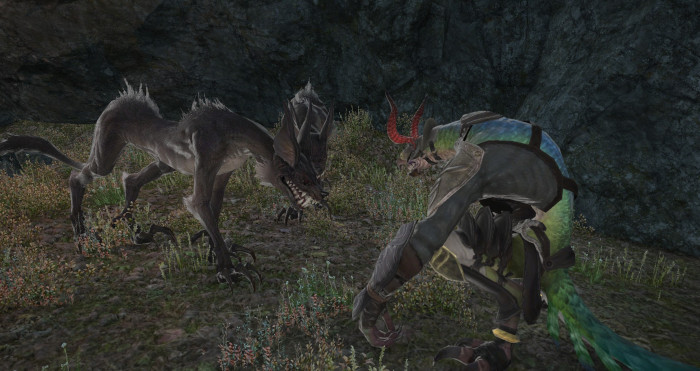
Later, I recounted what had happened to Bryde outside the Bobbing Cork, a young Hyur who overheard and called me over. She manages a crafting area on this platform and was curious why I would be trying to engage with the Ixal.
Her workshop is a curious one, and she typically informs crafters that it is reserved for “special tasks.” She was reluctant to speak out because of the nature of her work, but was willing to help me. Following her advice, I left Fallgourd Float, making my way into the Gelmorra Ruins. This section of the ancient subterranean structures that dot the Black Shroud poke through the ground in scattered chunks thanks to geographical shifts over the years. As I wander through, I find what I’m looking for, a space between the stones that I can pass through.
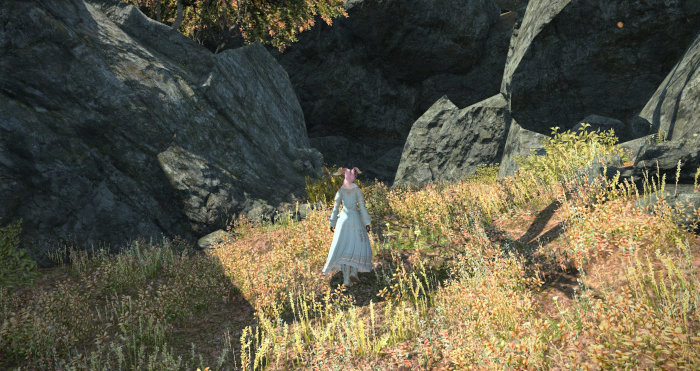
The shadows and breeze make this place noticeably cooler than the surrounding forests, as the stones form natural barriers much more efficiently than the shade of leaves. Sounds are also muffled and echoed, making the shuffling I hear as I walk forward eerie. The distinct horns of an Ixal tip me off to what caused these noises.
When I raise my hands this time, however, I am met not with a bow but instead with a similarly empty hand raised in a cautious welcoming gesture. We nod, and the Ixal motions me to the right, a small path leading to a gate. She then returns to tending to a couple of wolves, tamely panting next to their master. The doors to the gate opened as I drew near and an Ixal who I would later come to know as Methuli Cattlan directed me to Sezul Totoloc.
He is, surprisingly, accompanied by a Lalafell and the two are looking over blueprints for what appears to be an airship of sorts. It is here that, before continuing this tale, we must examine the history of the Ixal.
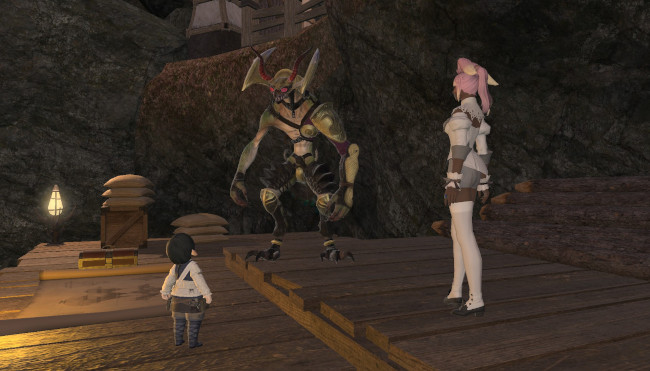
Years ago, following the War of the Magi, Elezen and Hyur who sought to resettle in the Black Shroud were chased underground by the elementals. The two disparate races came together to create Gelmorra, where they lived for centuries. This forced migration acted in some ways as a blessing, as above ground the Ixal inhabited much of the Black Shroud and were not fond of the idea of sharing land with outsiders. Because of the disconnection, some history has been muddled over oral retelling across generations, but we do know that the Ixal used to be gifted with the ability to fly using their own wings.
During this time, it is believed they occupied a lost continent in the sky they called “Ayatlan.” At some point, it is said they slighted the Twelve, and this was not met with a blind eye. The Ixal were cursed, and soon after, newborns were increasingly brought into the world without the gift of flight. The Ixal then likely started to scout out new lands where their young might not suffer in a world that demands aerial living.
However, Ixali expansionism eventually incurred the wrath of the Elementals. This led to their exile from the Black Shroud. Eventually, the Hyur and Elezen were permitted to return to the surface and formed a Grand Company, defending and appeasing the Elementals. The Ixal, on the other hand, sought out new allies in the Primal Garuda, one they revered for her obvious avian connections. Seeking to reclaim the skies, the Ixal began creating airships of their own, and have been slowly improving their processes for doing so. The need for resources brought them back into the Black Shroud, and it is there that many tribes have laid roots in hopes of one day returning to Ayatlan.
Those who follow Sezul Totoloc have similar dreams to the other tribes, but unlike them, these Ixal understand their limitations. They seek to form cooperative relations with crafters and traders in hopes of achieving capable airships within their lifetimes. Other tribes do not look favorably upon the new partnerships of the Ehcatl Nine, but they do not seem to have an interest in stopping these more friendly beastmen. Perhaps they hold out hope that the unconventional methods of this secluded bunch will one day pay off.
Sezul Totoloc greets me with what I can only describe as a pained attempt at a smile, something he must have learned interacting with others who have passed through. Tataramu also offers greetings, albeit less enthusiastically. The Lalafell is engrossed in the blueprints and is not very phased by an outsider, despite being one himself. Sezul gives a warm greeting and welcomes me to spend time among his people. They are somewhat abrasive, but compared to the prior encounter, this tribe is much more friendly.
We share a meal together. It is not a special dish, as Sezul shares that his people do not place much reverence in cooking. The food is simple and delicious, a mix of fish from the river and foraged vegetables and berries from the nearby Peacegarden woods. As we eat and the sunlight wanes, some Ixal get up to dance and play music. Drums and flutes fill the air with the traditional sounds of their people, and the dances, I’m told, represent a retelling of their history.
Some Sharlayan scholars might say that the Ixal are nothing more than the botched product of Allagan chimera-making, remnants of a servant-class people once called the Iksalion. However, Sezul and his tribe are firm believers that the Iksalion were once a proud race before the meddling of the ancient and enigmatic empire, that they existed long before the Allagans rose and will continue to flourish long after even the Grand Companies are but a memory. There is a sense of pride in his words. He is not the barbaric fool that I had once been told was the case for all beastmen. No, he is quite intelligent in his own right. And who is to say for certain what really happened eons ago?

As the stars begin to make their nightly appearance, many settle in for much-needed rest. I am permitted to remain with them, rather than trek back to my inn room in Fallgourd Float. The lodging here is not as modern, to say the least. We occupy a pod-like structure resting on a platform. The roof and door are woven, allowing airflow to keep things fresh. I say “we” because the beds are tightly packed together. The Ixal do not mind a more communal space for sleeping. This takes getting used to, but I do end up finding the conditions somewhat cozy.
The rustling of the others wakes me. The sun has yet to come up, but the excitement of the camp is enough to signal that the day is beginning. We leave the enclosure and already, several of the others are preparing for the day, counting stock and supplies and creating cooking fires. Today I am asked to help prepare a meal. I work with Duzal Meyean the Steady as he shows me the methods for filleting the rest of yesterday’s catch. The prospect of day-old fish is not particularly enticing but I do as instructed. Minus a lookout, the entire tribe gathers to take part in the meal. Unlike the night prior, merriment is found not in song and dance, but in discussing the plans for the day.
Some are assigned to making wing components, others are tasked with gathering more supplies. One is told to check in on their spies within other tribes, a practice that I have come to learn is not uncommon amongst the various Ixal factions. From the ruined dirigibles I have been able to see glimpses of in my travels, they are made in a somewhat piecemeal fashion with parts traded or stolen from other tribes. I am also asked to join the work and handed a pair of Ehcatl Wristgloves.
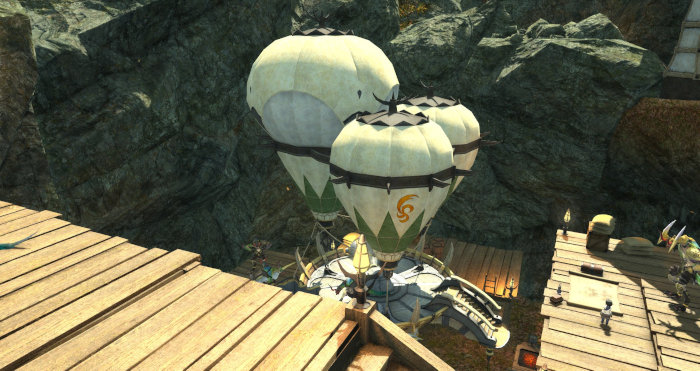
Duzal’s brother, Tazel the Lettered, asks me to bring branches and logs to Fallgourd Fort. He has a contact there who is willing to trade for some necessary items in crafting engine casings. I meet with the contact, an Elezen, and we make the trade quickly, trying to avoid raising any suspicions from the nearby guards. He tells me to bring them to the workshop I had visited before and the helpful Hyur there greets me with a knowing nod. She helps me to finish the construction of the parts and before I know it I am back in camp.
Tazel inspects the piece carefully. He is calm and thorough, peering at it from every angle and ensuring there are no flaws. His face seems to light up and he gives a loud squawk! “Perfection, featherless one! This is a fine piece, it is!” He puts it down gently and hands me a sort of coin. Suzel later informs me that it is an “Oaknot” and that his people use them to trade goods they highly value. The tribe is no stranger to Gil, but they reserve their most treasured goods for this internal currency.
Day after day, this similar routine goes on. We rise, we eat, we work, we dance, we sleep. It is a simple life, but it is fulfilling in a spiritual way. And each day a little more progress is made on their airship. The wristgloves I had been given are now scuffed and worn, but they held together well throughout the daily tasks. As I say my goodbyes, the group gathers. Even Tataramu gets up from his usual spot to see me off. It is like leaving home all over again.
The Grand Companies often tell us that the so-called beast tribes are no better than squabbling monsters or voidsent, that they plague the land with their presence, and that there is no redemption for them. This sort of propaganda might have some points derived from true encounters over the years but it is clearly not the rule for them. My time with the Ixal was illuminating and I certainly will not be looking to them or any other clans with the same sort of disdain that I had been raised to carry.
In some ways, it is almost ironic. It is no secret that the Garlean Empire views those outside its borders to be inferior and yet despite being seen that way, many of our societies chose to view beast tribes such as the Ixal in the same light. Perhaps the takeaway from all this should be that we are not all so different. We can shed the trivial matters that divide us and perhaps one day come together and forge a new path of cooperation. Who knows, maybe someday Ixal Airships will line Gridanian ports and Amalj’aa delegations will help broker new trade deals between Ul’dah and Limsa Lominsa. And perhaps in a world without so much petty hate we can all learn to dance and sing after a day of fulfilling purpose together.


